|
Another season has come and gone and we're here to mark and celebrate this "sacred juncture" with a mini day retreat. For those of you in the area, join us this Sunday for a 6-mile hike, guided meditation, and Ayurvedic education on seasonal wellness. Check out the event page for more details. In the meantime, here are some questions to reflect upon as we make this transition:
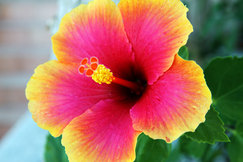 As summer is dwindling, we can all feel the change of season on the horizon. Here in Sonoma County, the past few days have been exceptionally hot and I've been enjoying the last of my favorite cooling beverages before fall comes. Hibiscus Flowers are on that list, as they are cooling, sweet, astringent, and in Ayurveda, pitta pacifying. Hibiscus helps to purify the blood, the heart (physically and spiritually) and also improve skin complexion, the circulatory, reproductive, and nervous system. For a simple hibiscus infusion, let 1/4 ounce of dried Hibiscus Flowers sit in 1 pint of cool water for about 15 minutes. Traditional Medicinals has a great Hibiscus Blend if you'd rather use tea bags instead of loose flowers. Locally, I recommend The Kefiry's fermented "Hibiscus Maya: Royal Flower Elixir" - very refreshing and just sweet enough. Enjoy this last week of summer! Xo 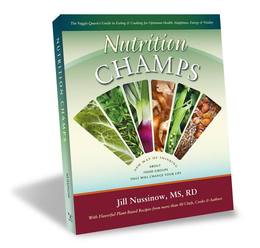 Jill Nussinow, also known as the Veggie Queen has just published her third book, Nutrition CHAMPS. You'll want to keep this piece of inspiration nearby, as it's loaded with plant-based recipes that take you through each food group. Her knowlege and vast experience with vegitarian cuisine is helpful not only when deciding what to cook, but how to make healthy, nutritous eating simple and enjoyable. I had the honor of contributing four spice blends to the book, one for each season. Below is the 'Summer Seasoning Blend.' I highly recommend cooking with fresh herbs and experimenting with your own blends. It makes all the difference to enhance each meal with the tastes you love. Especially, with the bounty of fresh garden herbs this season. You can purchase Jill's book here in print or as an e-book. Happy cooking! xo Nothing beats a refreshing drink to combat hot summer days. I had the pleasure of visiting an old friend and her kiddos in Bellingham, Washington a couple weeks back. After a day of exploring the farmer's market and soaking up the sun we decided to go home, eat some watermelon and chillll out. Wait, better yet, let's drink some watermelon. Oh wait, even better, let's add aloe and mint and make a snazzy watermelon mock-tail! From an Ayurvedic perspective, this is a perfect summer drink. It's cooling, pitta pacifying, and hydrating. Melon's high water content helps bring fluids into the body. This is why it's recommended that melons are eaten on their own, at least one hour away from other foods to avoid bloating and heaviness. Aloe Vera is a wonderful plant that's revered for decreasing inflammation, purifying the blood, healing the skin, and supporting the liver - all of which can get aggravated during the hot pitta season. Adding mint gives an extra cooling, and calming effect. Here is our simple recipe and pics from the endeavor: INGREDIENTS:
One small watermelon 1 cup of Inner Fillet Aloe Vera Juice (Whole Leaf can be too bitter) About 2 Tbsp. fresh mint Blend together and garish with a mint for extra snazze! 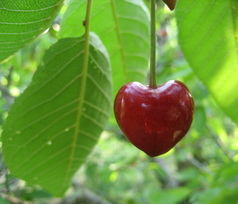 From John Doulliard's Hot Tips to Stay Cool this Summer: "Cherries are always my signal that spring is over and summer is here. Their presence signals us that this is the last chance to get spring detox benefits. This doesn’t mean you cannot detox in the summer, it’s just that with each season nature preps different tissues for cleansing, such as the skin and liver. Cherries are unique because they are half berry and half fruit. They look and grow like a fruit, and act like a berry in the body. Like all berries, cherries are major lymph and fatty tissue cleansers of the spring. Summer calls for foods that are higher in healthy carbohydrates (vegetables and some fruits) to drive energy for the long days of summer. Summer is also when we begin to accumulate heat energy. The long days of activity with less rest build heat (pitta) in the body, which reaches its peak at the end of the summer. This accumulation of heat is represented by the red and orange autumn foliage responding to the summers’ heat rising into the leaves of the trees – drying them out in preparation for fall. Falling leaves fulfill a natural detox process of getting rid of the excess accumulated heat." The time will come
when, with elation you will greet yourself arriving at your own door, in your own mirror and each will smile at the other's welcome, and say, sit here. Eat. You will love again the stranger who was your self. Give wine. Give bread. Give back your heart to itself, to the stranger who has loved you all your life, whom you ignored for another, who knows you by heart. Take down the love letters from the bookshelf, the photographs, the desperate notes, peel your own image from the mirror. Sit. Feast on your life. ~Derek Walcott Yoga Nidra is not a practice, but rather a state of consciousness that can be achieved through particular relaxation techniques, visualizations, and body-awareness meditation. While various methods are used, most of them involve laying on your back with your eyes closed and following the guidance of an instructor’s voice through each body part. Most of all, it's about turning the awareness inward, becoming a witness to the experience, and welcoming whatever arises. Yoga = Union, Oneness Nidra = Sleep Definition: "yogic sleep" or expanded awareness in a state of deep-relaxation Although Yoga Nidra is referred to as “yogic sleep,” you don’t actually sleep, but rather come as close to the sleeping state as you can while remaining awake and present. The goal is that from our deepest level of relaxation, the physiology of the body can return to balance and healing can occur. Some known benefits of relaxation are reduced sympathetic nervous system activity (fight-or-flight response), improved functioning of the immune system, lower blood pressure, slower heart rate, improved circulation, pain reduction, and reduced inflammation. The origins of Yoga Nidra are not precise, yet there is mention of Yoga Nidra in various ancient vedic texts like the Hatha Yoga Pradipika. “Modern” pioneers in the field have been the founder of the Bihar School of Yoga, Swami Satyananda Saraswati and founder of the Himalayan Institute, Swami Rama. More currently, Dr. Richard Miller, the founder of the International Association of Yoga Therapy developed the iRest technique that has been successfully implemented into many VA hospitals and military bases to help PTSD victims. Dr. Richard Miller has also conducted several research studies that have shown the benefits of ongoing relaxation and meditation practices, as well as the unique, altered-state of Yoga Nidra.
“During Yoga Nidra, we intentionally locate and investigate sensations, feelings, emotions, thoughts and images. We go into them. We explore them. We bring them into consciousness. As these impressions are allowed to float freely in awareness, without our trying to repress or express them, they arise and fade away into the background, no longer bothersome to the mind because the mind has no intention to refuse or deny their existence. This approach of pratyahahra (to draw the prana of the subtle senses inward) is a process of elimination whereby unconscious material is allowed to surface into awareness, into consciousness. When repressed material arises without personal reaction, it dissolves.” –Dr. Richard Miller (Developer of iRrest and founder of the Integrative Restoration Institute founded in 2005). “Just sitting quietly, or say watching television, is not enough to produce the physiological changes. You need to use a relaxation technique that will break the train of everyday thought, and decrease the activity of the sympathetic nervous system.” – Dr. Herbert (Benson of Beth Israel Hospital School in Boston, author of the Relaxation Response 1975 with updates edition in 2000). Through PET and EEG recording, the Scandinavian Yoga and Meditation School (Nov. 12, 2009) found that Yoga Nidra takes people into Theta state with secondary Alpha waves meaning simultaneous deep meditation and awareness. This confirms that meditation is a fourth major state of consciousness in addition to dreaming, sleeping, and wakefulness. One can be completely aware in a deep state and one can consciously experience and control the brain’s activity simultaneously. Overall, experiencing Yoga Nidra on a regular basis is a valuable complementary approach to supporting any healing process and to ensure overall wellbeing. Sources & Resources: Integration Restoration Institute - www.irest.us Books: Yoga Nidra by Swami Satyananda Saraswati and Yoga Nidra: A Meditative Practice for Deep Relaxation and Healing by Richard Miller  There is always an excitement in the air when spring arrives. Colorful buds are blossoming, more birds are chirping, and new shoots are pushing their way through the earth. Even though winter here in Northern California was extraordinarily mild, you can feel a freshness and anticipation for the months to come. Today on the Equinox there is equal light and darkness - an end of winter and the beginning of a three month journey to the Summer Solstice. For several years now I've been studying yoga with Shiva Rea and learning about syncing with the rhythms of nature through various practices. Her new book, Tending the Heart Fire, beautifully illustrates the solar and lunar cycles of the year and ceremonies that take place across the world around these "sacred junctures." Living in a culture that in many ways lacks stories and myths that connect us to our environment, I find it even more important that we create some kind of ritual around these transitions. Whatever it may be, I hope we can all encourage each other to pause, reflect back, and envision the season ahead. Here are few reflective questions that might be useful to contemplate as the landscape changes around us and within us: *What needs to be released and let go of before entering this new season? *What seeds are you wanting to plant for the rest of the year? *What dietary shifts are appropriate? (a.k.a. what is the earth providing us with now?) *What lifestyle practices need readjusting? I'll be writing more posts about specific Ayurvedic practices for Springtime. Until then, I recommend taking Maria Garre's webinar on April 2nd or detoxing and staying allergy-free, or reading Dr. John Douillard's article on cleansing. Also, on April 11th I'll be giving a talk at the Center for Inner Health and Stillness on tips for staying balanced in the spring. Follow this blog by email or contact me for more info and updates. Have a wonderful Equinox - may we bring ourselves fully into this new season! I think we can all agree that the month of April was full and transformational to say the least. Astrologically, it was no joke! Everyone I've come into contact with has mentioned some major shuffling. The biggest shift in our family was the passing of my 97 year-old Grandmother. She left this earthly plane the morning of the blood full moon and her service was the following Tuesday after Easter.
Experiencing death during a time of year when there is so much life and rebirth felt appropriate in an unusual way. The visceral feelings of loss and grief has brought so much realness to everyday life and a reevaluation of what matters most and how we choose to spend our time here. This post is in honor of her strength, vivacious spirit, unforgettable lessons, and exrordinary legacy I feel beyond proud to carry on. Love always, Camina Amongst the stress, the worry, and strategizing of life, how can we accept that this, this right here is indeed perfect? What's behind all the 'doing' when we take a step inward and listen? What happens when we make space to really be and welcome whatever arises?
Yoga Nidra, also known as "yogic sleep", is a deep relaxation practice geared toward calming the mind and nervous system. It involves laying down on your back with your eyes closed and being guided through a body-awareness meditation. This practice is designed to invoke an overall sense of ease, and help us access a peaceful place within that remains steady through all of life's ups and downs. Join me on Wednesday mornings from 10-11:30am at the Center for Inner Health and Stillness in Santa Rosa for Yoga Nidra. Come to truly relax, let go, and enjoy the moment. A new 6-week series begins this week ($50). Contact me for details. XO 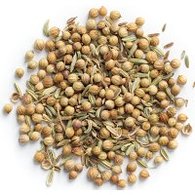 Spring has definitely arrived and I’ve been feeling the surge of activity and inspiration. Lately for me, the point of balance seems to be between holding a larger vision strong and clear while at the same time taking the necessary steps in front of me. Next week I have the honor of assisting and facilitating a week-long Pancha Karma treatment and to work along side a dear friend and colleague, Heather Anthony, the founder of Revive Ayurveda. Pancha Karma is a rejuvenation and purification process specific to each person that's geared towards deep healing from the inside out. In the spirit of spring and cleansing, here is a staple Ayurvedic tea recipe called CCF. Those who are familiar with this blend know that CCF stands for a coriander, cumin, and fennel. These herbs that are also used a culinary spices are combined in equal proportions. They are tridoshic, meaning they're balancing for all three doshas - vata,pitta, and kapha. This tea blend is also diuretic, which helps to clear excess kapha or water accumulation, which can be present this time of year. Sip throughout the day for overall health and digestive support for before, during, or after meals. ~CCF TEA~ 1/2 tsp. Cumin Seeds 1/2 tsp. Corridor Seeds 1/2 tsp. Fennel Seeds *Boil whole herbs together with 1 1/2 cup of water for about 5 minutes. *Steep for 10 minutes or more, then strain. *You can also make the tea with the powdered form of each herb. Mix a 1/2 teaspoon of each with a cup of hot water. Most of us are familiar with that time of day when our energy dips and reaching for sweets or caffeine feels like the only option. Some days it's not possible step away from the desk or task at hand and we have to power through. Last week I had a lot on my plate and got into the habit of having an afternoon snack of chai and chocolate to overcome "the slump." Although it gave me a temporary boost, it wasn't really what I needed. Don't get me wrong, chai and chocolate are wonderful but when they're used to mask deep exhaustion or lack of sleep, it can be detrimental (trust me, I learned the hard way and got sick!). I find that when these habits orbit back around they really remind us to draw upon healthier resources and live the wisdom we know. Luckily, Ayurveda shows us many ways to work with our natural energy. For example, take a look at the 'Ayurvedic Clock' below. The hours between 2-6pm are considered vata time. This is often the time of day when people are more spacey or ungrounded because the air and ether elements that make up the vata dosha increase. This can cause instability in the mind because air and ether have a light, mobile, and subtle nature (based on the 10 pairs of opposites used in Ayurveda to describe the doshas). These hours can be great for creative, artistic activities, and moving the body while mentally strenuous tasks are not recommended because the mind may get distracted easily. If you have a vata constitution, you'll likely need more structure and disipline during the afternoon. If you are on the opposite side of the spectrum and have more kapha, or are generally prone to sluggishness, these hours can be motivating and inspiring to get going and begin projects. Vata hours are also between 2-6am, which is why many people feel a surge of energy in the middle of the night if they stay up past 2am. If you have difficulty sleeping these are often the hours one wakes up. Again, because of the subtle qualities of the air and ether elements can arouse the mind. This is also why many spiritual practices are done in the early morning when the sun is below the horizon because etheric energy is conducive for meditation and expanding consciousness. During the day however, too much air and ether can be deranging and hard on the mind and body if not managed well. Here are some of my favorite tips and tricks for working with vata during the day and overcoming the afternoon slump. ~~~ Tips n' Tricks ~~~ 1.) Walking: Take a brisk 10 minute walk outside to increase circulation andprana, or life-force. Focus on taking deep inhalations in through the nostril and long exhalations out through the nostrils. Even if you are in a busy city, observing the trees, the sky, the birds and other aspects of nature can help calm the nervous system and settle the mind. 2.) Laying Down: If possible, lay down and close your eyes, even if it's just for a few minutes. Even better, lay down outside and have your sacrum touch the earth. Depending on how much time you have, a restorative relaxation practice like yoga nidra, (also known as yogic sleep) is great when you need a temporary rest. I have found that taking a break and recharging my system in this way makes for a much more productive day. 3.) Power Snack: When life demands you to keep going and your appetite is strong, have a high-protein, or high-energy snack. Here is a nice "treat" that will definitely leave you feeling alert and energized to get things done! Dates and almonds are ojas building, meaning they increase our vitality and immunity; while the herbs in this chai recipe are grounding, strengthening, and assist digestion. Cacao and maca add an extra kick, as they are both super-foods for endurance. Almond Butter, Cacao Bean Stuffed Dates *Cut dates in half and take out the pit. *Fill with a small amount of almond butter and top with 1 cacao bean. Rosemary's Garden - Nourishing Chai (non-caffeinated) Contains powdered organic/wildcrafted: Maca, Ashwagandha, Shatavari, Eleuthero, Licorice, Ginger, Cinnamon, Cardamom, Clove, and Black Pepper. *Add 1-2 teaspoons for each cup of water. 4.) Aromatherapy: Use uplifting essential oils like peppermint, pink grapefruit, or lemongrass to bring alertness and clarity. If you are feeling flustered or hyper (which tends to happen during this time of day) try grounding aromas like vetiver or jatamansi that are in Floracopia's Vata Essential Oil Blend. Use an essential oil diffuser if you have one. Or, do a simple 'palm inhalation' by placing a drop or two of oil on the palm of your hand, rub your hands together, bring your palms up to your nose, close your eyes and inhale. 5.) Creative Pursuits: This is a great time of day to dance, make art, play or listen to music. If you are working during these vata hours, try to work on the more "fun" tasks that don't require as much mental focus. Also, take breaks away from your computer or internet browsing (a very etheric activity) during the afternoon to stay as grounded as possible. I recommend experimenting with these suggestions and see what works for you. Most importantly, it's about bringing awareness to these cycles and our varying energy levels throughout the day so we can recognize when it's time to engage and step forth, and when it's time to take a step back, recover, and conserve energy. Of course, we are all works in progress and sometimes fall into old habits, but it's never too late to self-correct. Following a proper daily routine optimizes health across the board. In this case, the ultimate goal is being able to come home at the end of a long work day and instead of zoning out, having enough energy to cook, spend time with loved ones, and do enjoyable things.
I hope this has been helpful. Good luck! ~Camina 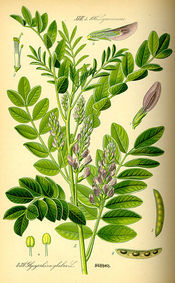 I've already mentioned that incorporating herbal teas into your daily winter routine is beneficial, but I want to highlight one of my favorite herbs, licorice. Not the candy - the delicious, sweet root. If you don't normally like the taste of licorice, I have a feeling you will like the teas listed below. I've been experimenting with some new blends and sampling them out to friends and family who have found they are perfect for cold winter nights, even in California! Licorice itself is very soothing and holds many medicinal properties. It's great for sore throats, coughs, and difficulty breathing. It also has a wide range of benefits for digestion, the reproductive system, the skin, as well strengthening the kidneys and calming the nerves. In combination with other medicinal spices, licorice tastes even more delicous. 'Licorice Marshmallow' tea is my most recent recipe, followed by two recipes crafted by my all time favorite Ayurvedic Chef, Mira Murphy. Please note that if you are experiencing excess kapha, the Ayurvedic dosha made up of earth and water then you'll need to be cautious of using licorice in excess. Also, be aware if you are pregnant or breastfeeding. ~Licorice Marshmallow~ 10 cups water 2 Tbsp dried licorice root, whole (not powdered) 1 Tbsp dried marshmallow root, whole 2 tsp dried ginger root, whole 5 cinnamon sticks *Boil water and add herbs *Keep at a low to medium heat for 10-20 minutes, then strain *This blend is very sweet on its own ~Licorice, Orange Peel and Vanilla~ 8 cups water 1 Tbsp licorice root (cut and sifted preferred, or powdered) 1 orange, sliced into rounds, peel included 1 fresh vanilla bean, cut into small pieces *Boil water and add licorice, orange, and vanilla *Steep for 10-60 minutes *Strain and enjoy! ~Licorice Spice Tea~ 8 cups water 2 inches fresh ginger 3 sticks cinnamon 2 star anise 1 tsp whole clove 1 Tbsp whole cardamom 1-2 Tbsp licorice root (cut and sifted preferred, or powdered) *Simmer ginger for 10 minutes with lid on *Add other spices and steep for 10 minutes Strain and enjoy! If you are not into making your own tea from scratch, a blend you can buy is Yogi Tea's Egyptian Licorice. It's much milder so you'll need to use several tea bags to make a medicinal dose for a sore throat...etc.
Source: Sebastian Pole, "Ayurvedic Medicine" Source: Mira Murphy (former Ayurvedic chef at 7 Centers, Sedona). Her site, MiraMurphyMedicine.com is coming soon. In continuation with the theme of love this month, here is another beautiful poem by Hafiz. As my friend Matt wrote, "When I read a poem like this, I think of how much saccharine and cheap Hallmark sentimentality about love gets peddled in our society, and how badly we are at telling stories of love." I completely agree and am grateful we have access to the wisdom shared by masterful poets throughout history. I hope Hafiz's words continue to inspire an unleashing of creativity that warms you up from the inside out in this last month of winter. Om Shanti. 'We Have Not Come to Take Prisoners' We have not come here to take prisoners, But to surrender ever more deeply To freedom and joy. We have not come into this exquisite world To hold ourselves hostage from love. Run my dear, From anything That may not strengthen Your precious budding wings. Run like hell my dear, From anyone likely To put a sharp knife Into the sacred, tender vision Of your beautiful heart. We have a duty to befriend Those aspects of obedience That stand outside of our house And shout to our reason "O please, O please, Come out and play." For we have not come here to take prisioners Or to confine our wondrous spirits, But to experience ever and ever more deeply Our divine courage, freedom and light! ~Hafiz Valentine's day is here! It's always been my favorite holiday (I know, gross!). Not because all of the cheesy hallmark madness of course, but because of the sweetness that comes from simple gift giving. It may also have something to do with my adoration of chocolate, homemade cards, and my birthday beingexactly nine months later (I know, gross!). Whether or not you are pro or anti-Valentine's day, you can't go wrong with expressing love and implementing self-care practices that keep your heart open and healthy. Here are some of my favorite Ayurvedic practices for heart health: 1.) Self-Abhyana - otherwise known as a warm oil lymphatic massage. Use an oil that is appropriate for your constitution (more on this in later posts) and make long strokes up your arms and legs towards your heart to help move the lymph. Create friction around your joints using a circular motion to build heat and support circulation. 'Snehana' in Sanskrit means oil, but it also means love. Oiling the skin has traditionally been a practice of offering love to the body, making it a great time to say affirmations, chant mantras, and think positive thoughts. 2.) Rose Tea - Rose is cooling, anti-inflammatory, antidepressant, and a aphrodisiac. It has an infinity for opening the heart and bringing mental clarity. It's considered a 'sattvic' herb, meaning it brings forth devotion and invokes higher states of consciousness. You can make your own tea blend by mixing rose and chamomile for example, if you are going for an extra calming effect. Or try Tulsi Rose tea bags from Organic India. Tulsi is an adaptogenic herb which his great for relieving stress and also pairs well with rose. 3.) Hrid (Heart) Basti - an Ayurvedic treatment involving a warm medicated oil and milk decoction placed on the heart, contained in a dough dam. This healing treatment is deeply nurturing, opens the heart on an energetic level, as well as strengthens and regulates cardiac function. Some of the herbs used include rose, hawthorn berry, lavender, ashwaganda, skullcap, and St. John's Wort. The dough that's used has an astringent quality which helps to draw out impurities from the skin. It also rests somewhat heavily on the chest, increasing awareness to this region of the body. 4.) Bow Pose - opens the chest and 'anahata' (heart) chakra. To do this posture, lay on your stomach and reach your arms back, grabbing onto the outside of your ankles. With a deep inhalation draw the torso and legs up off the floor simultaneously by kicking into your hands. Hold the pose for a few breaths and lower slowly on an exhalation. Lay back on your stomach, resting your forehead on the backs of your hands, or go into 'child's pose' to recover. 5.) Cuddling - we all know human touch is important for health and now more and more 'research' is showing how cuddling increases oxytocin and is a remedy for depression. In Ayurveda, human touch and sex are emphasized in the cold, winter months. Just as the trees are bare and exposed, we too need more comfort and nurturing. Get your cuddle on! 6.) Salt foot soak - although this does not directly link to the heart, soaking the feet is overall relaxing and can lower the heart rate. Regular foot soaks followed by oiling the bottoms of the feet, can help relieve deep-seated stress and promote restful sleep; especially when using quality salts like a high-trace mineral epsom or pink himalayan. Adding essential oils and rose petals are a definate bonus to any food soak. Since rose essential oil is quite expensive, a friend just shared with me a nice floral and sweet alternative blend that also works with the heart: 'Champa' & 'Cardamom.' 7.) Heart Breath - place your hands on your heart center, either in prayer position or hands placed one on top of the other. Close your eyes and take several deep breaths. Feel your heart beat and listen within. Making this connection can help slow down our racing mind and tune us in to what matters most. Even if you only have few minutes time, breathing in this way can be highly beneficial and reset your whole approach to the day.
I hope you enjoy these 7 practices, and have and have a wonderful Full Moon Valentine's day. Love it up! A friend of mine is traveling to Laos and asked what people would recommend her to bring on a long flight. Thieves oil! Thieves oil all the way for me. It's my #1 travel savior. I always keep it by my side and can attest to numerous occasions it has helped me fight off sickness or kept me healthy in unusual circumstances. Before getting on an airplane I usually douse myself with it and if I'm feeling under the weather while traveling, I'll put a few drops on my chest or swollen glands before taking a hot shower. If you have sensitive skin, putting a few drops on the shower floor also works to create an aromatic steam. The smell is strong so if you are not familiar, be warned! The name 'Thieves Oil' comes from thieves and grave robbers during the 15th century that used this oil blend to ward off the plague. You can imagine this stuff is powerful. It boosts the immune system, is antiseptic, antibacterial, and antiviral. Not only is it great for travel, but also for winter season cold/flu prevention. You can put a drop on your hands as a natural hand sanitizer (make sure not to rub your eyes!) or just take a deep inhalation before or after being in a crowded or contaminated space. Make your own: ~Thieves Oil~ 4 parts Clove Essential Oil 4 parts Cinnamon Essential Oil 2 parts Eucalyptus Essential Oil 1 part Lemon Essential Oil 1 part Rosemary Essential Oil **Other optional immune boosting oils: Tea Tree, Sage, Lavender, Thyme **Use a base oil like sesame, almond, or jojoba to make the blend last longer. Or buy it: Young Living has trademarked this oil and has created a variety of products, like household cleaners, hand-wipes, sprays...etc. Floracopia is my favorite essential oil company and although they don't have a 'Thieves Oil' per say, they do have a Wellness Collection of six essential oils that have the same effect.
Check out the wonderful work my friend Jessi is doing in Laos on her 'blog'. Hey y'all,
It's been a while since I've made any blog posts. This site has been pretty inactive the past couple years - you know how it goes, false starts here and there blah blah blah. So here I am, diving back in. Extra motivating factor: tomorrow night I'm giving a talk on 'Ayurvedic Practices for Winter' and wanted to invite any Sonoma County folks to join. It will be from 6-7:15pm at the Center for Inner Health and Stillness in Santa Rosa, Ca (see below). Any feedback on the blog (or just in general) is welcome as things are still developing and gearing up. I'm not totally sure where this is going to take me, and that's always the most exciting part. Wishing everyone a happy second New Moon of the month and Chinese New Year of the horse tomorrow. Let's set some strong, clear intentions! Love, Camina According to Ayurveda, it's important to bring in warming spices during the winter to increase circulation and prevent congestion. Sipping on an herbal tea is a great way to incorporate medicinal herbs as well as stay warm. Here are some of my favorite blends for this season:
*Herbal Chai 4 teaspoons cardamon pods 2 teaspoons whole cloves 1 teaspoon black peppercorns 5 sticks of cinnamon 2 teaspoons whole star anise 1/2 teaspoon salt optional: add sliced fresh ginger Boil 4 cups of water and add whole spices (except cardamom). Let simmer 15-20 minutes and keep the lid on the pot to contain the essential oils. Turn off the heat, add cardamom, and let sit for 10 minutes. Lastly, strain out all of the herbs and enjoy! Here is a spiced tea variation with dry herbs from Dr. Lad's, 'Complete Book of Ayurvedic Home Remedies.' This blend is great for increasing your digestive fire after a heavy meal. 1/2 teaspoon dry ginger 1/2 teaspoon cinnamon pinch of clove Boil in a cup of hot water for 5 minutes and drink as tea. No need to strain. For those who prefer to use teabags, I recommend Traditional Medicinal's Ginger Aid and Yogic Tea's Chai Rooibos. One of my favorite projects this spring was putting in my first culinary herb garden. There's nothing like harvesting fresh herbs from the garden to spice up any meal. It's amazing how quick, easy and low-cost this project was. The soil and bricks were free from Hayes Valley Farm and the starts were just a few dollars. We decided to put in herbs that were pretty low maintenance like mint, rosemary, basil, thyme, and sage. I hope this has inspired y'all to get your hands in the dirt and build a spiral of your own. It doesn't take a lot of work and it beats paying for fresh herbs a the grocery store that go to waste! Check out 'this site' to learn more about herbspiral design, growing
information, and use of each herb. Here are some simple, yet delicious recipes from Bri. Maya Tiwari's book, "The Path of Practice: A Women's Book of Ayurvedic Healing." Enjoy!
*SPRING MASALA (spice mixture) 1 tablespoon cumin seeds 2 tablespoons coriander seeds 1 tablespoon yellow mustard seeds 1 teaspoon black peppercorns 1 teaspoon cardamom seeds *SPINACH MASALA | Serves 4 2 bunches spinach 1 tablespoon organic ghee 1 tablespoon Spring Masala 1 teaspoon tamarind paste 1/4 cup warm water 1 teaspoon unrefined brown sugar 1 teaspoon rock salt Wash spinach and trim stems. Melt ghee in a large skillet, and roast the Spring Masala for 30 seconds, until the ghee starts to bubble. Add the wet spinach. Stir, cover, and let simmer for 3 minutes until the leaves turn limp. Dilute the tamarind in the warm water and add to the spinach mixture, along with the brown sugar and salt. Stir, cover, and simmer for 3 minutes more. *BARLEY & LOTUS SEEDS | Serves 4 3 1/2 cups water 2 cups pearl barley 1/4 cup dried lotus seeds 1 teaspoon sunflower oil 1 pinch of rock salt Bring water to a boil in a medium-size saucepan. Wash the barley and lotus seeds and add to the boiling water. Add the oil and salt. Stir, cover, and simmer over medium-low heat for 20 minutes. Remove from heat and let stand for 10 minutes. Serve warm. *VEDIC CHERRY-ROSE PUDDING | Serves 4 1 cup of Cream of Wheat 1/2 cup spelt flour 1 cup organic cow's milk 1/2 cup rosewater 1/4 cup pitted dates 1/4 cup fresh cherries 1/4 cup sucanat 1 teaspoon cardamon powder 1/2 teaspoon ground nutmeg 1/2 teaspoon tumeric powder 1 handful fresh, organic rose petals for garnish Preheat over to 350 degrees. Oil a shallow baking dish and set aside. Sift the flours into a mixing bowl and pour in milk and rosewater. Mix into a smooth batter. Cut dates and cherries into tiny pieces and add to batter. Stir sucanat and spice powders and pour batter into prepared baking dish. Bake for 15 minutes, until the pudding cake is barely set and the top is golden brown. Spoon out the pudding cake into dessert bowls, garnish with a few rose petals. |
"harmonize with nature, walk a path
of balance" ❤ Newsletter ArchiveWinter 2024
Summer 2021 Spring Retreat 2021 Spring 2021 Winter 2021 Spring 2020 Winter 2020 Summer 2019 Winter 2019 Autumn 2018 Spring 2018 Winter 2018 Fall 2017 Summer 207 First Seasonal Newsletter Categories
All
Archives
January 2024
|
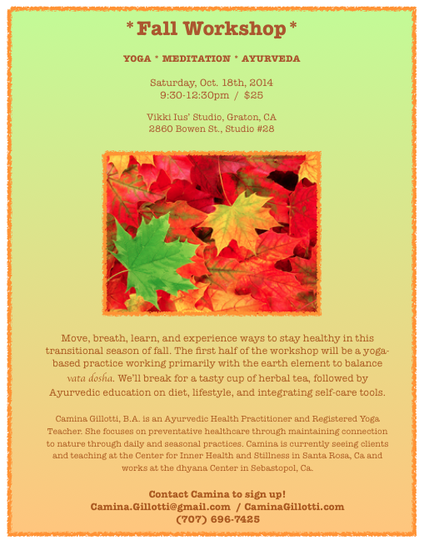
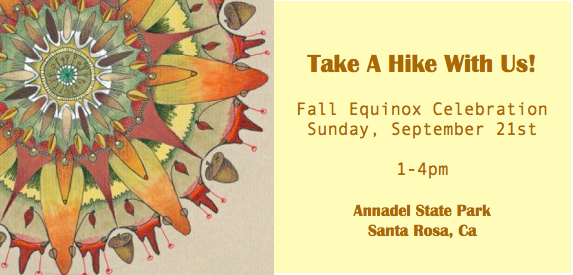
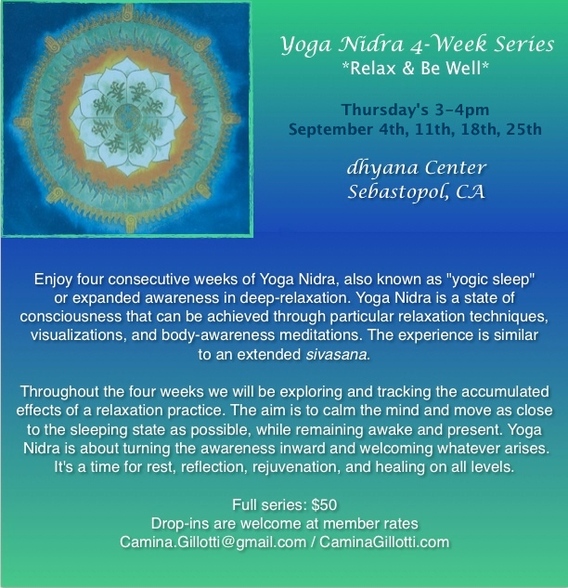
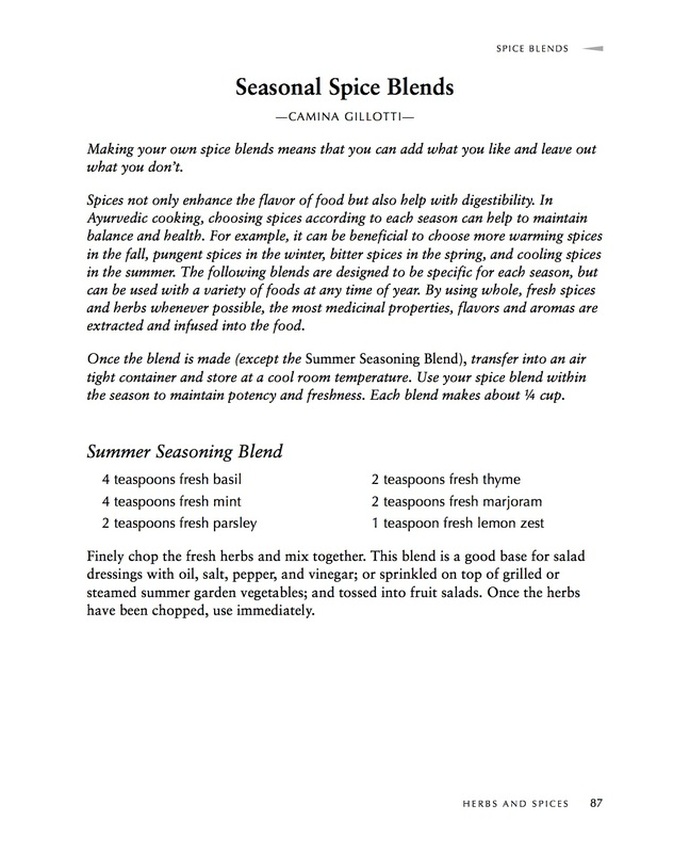

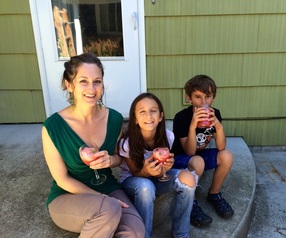

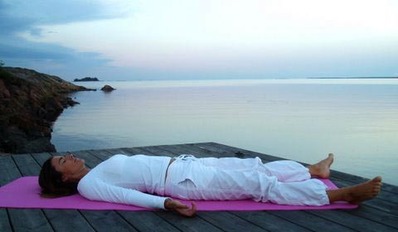


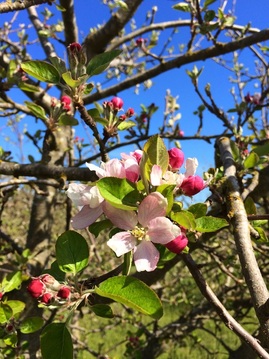

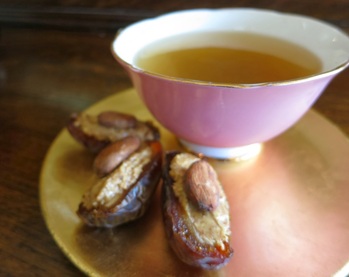
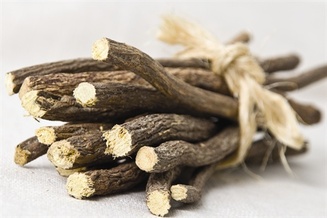
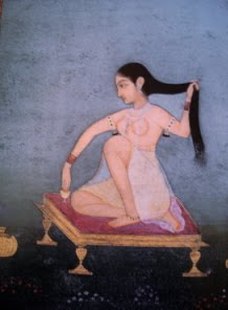
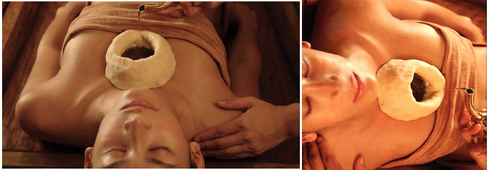
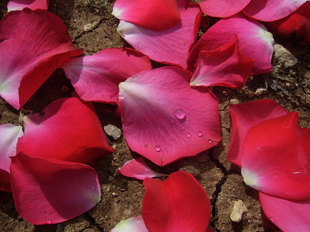
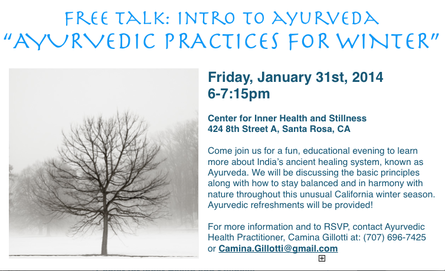

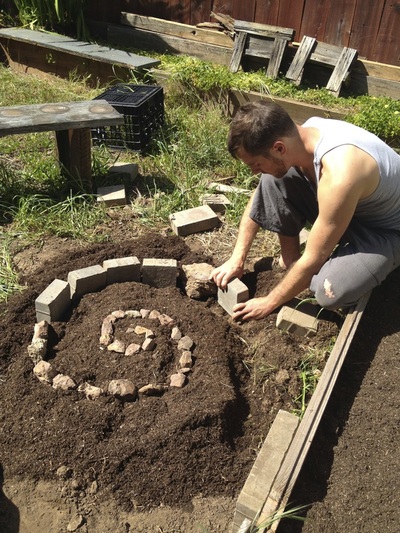
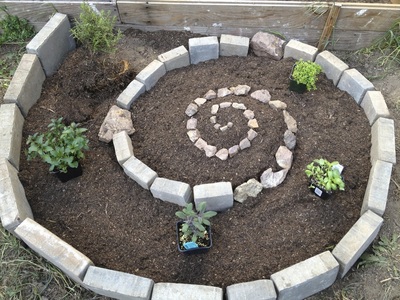
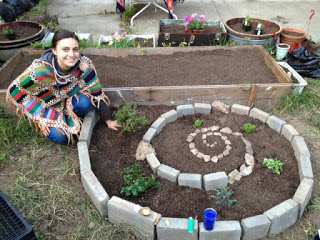

 RSS Feed
RSS Feed